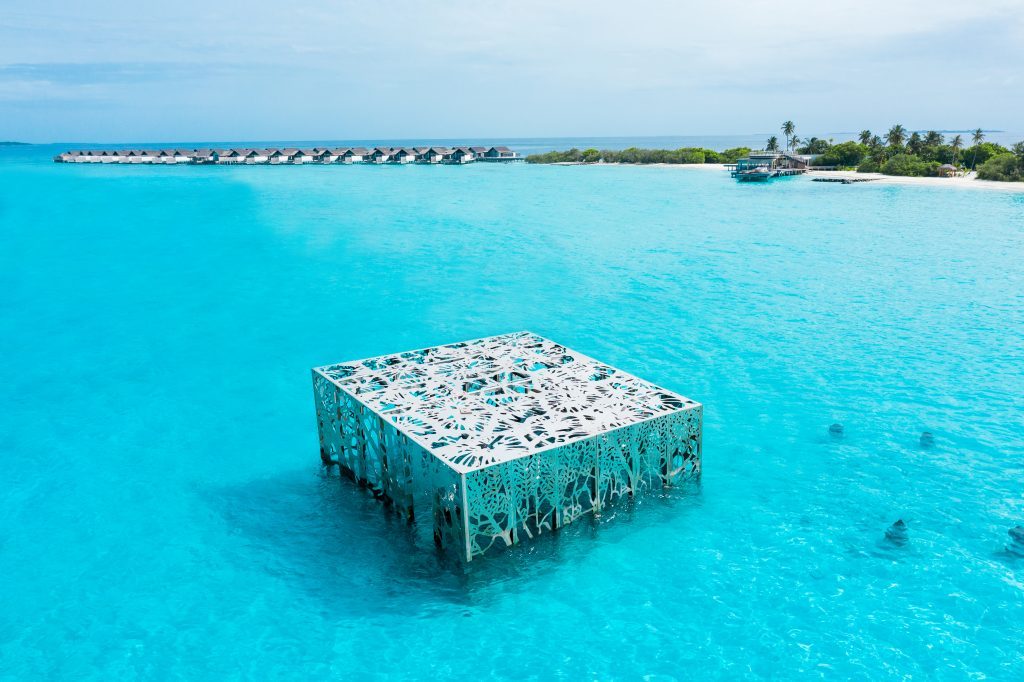A series of new sculptures within the Coralarium situated on the island resort of Fairmont Maldives Sirru Fen Fushi has been unveiled. It is a semi-submerged tidal gallery where “land, sea and art collide.” This is the first and only coral regeneration project in the Maldives in the form of an underwater art installation and is the first underwater museum in the country. For this installation the British environmentalist and eco-artist, Jason deCaires Taylor sought inspiration from the natural beauty of the coral reefs conceptualizing and designing around this theme.
The Coralarium aims to raise awareness whilst simultaneously educating the guests and rehabilitating the reef. The structure and sculptures within are specifically designed to attract a variety of fish and crustaceans, which in turn promotes coral larvae attachment, encouraging nature to seek refuge within the structure.
Inspired guests can create their own marine-inspired artwork in the on-site art studio, or plant their own coral to witness its growth as they revisit in the years to follow.

Taylor’s previous art installation at the resort was pulled to the surface for depicting human forms. The government ordered the removal of the sculptures after the Civil Court ruled it as posing a threat to “Islamic unity and the peace and interests of the Maldivian state.” Discussions spread quickly on social media with many calling this action out to be a politically motivated move with the 2018 Presidential election just days away.
The human figures in the Coralarium were symbolic of the relationship between humans and the environment. It showed the human dependance and connection to the natural environment. The sculptures were based on casts of real people, half of whom were Maldivians. As the artist himself pointed out, “it was a sad day for art and a sad day for the environment.”
Taylor’s work span continents and explores modern themes of conservation and environmental activism. Over the past 10 years he has created several large-scale underwater “Museums” and “Sculpture Parks”, with collections of over 850 life-size works.
